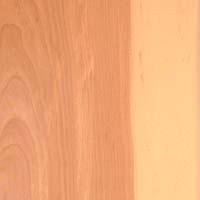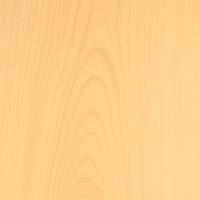 |
 |
|
Yellow Birch has been and continues to be one of the prominent wood species used for architectural woodwork. This is due not only to its attractive appearance but also to its general availability both as lumber or veneered products, its adaptability to either paint or transparent finish and its abrasion resistance. The heartwood of the tree varies in color from medium to dark brown or reddish brown while its sapwood, which comprises a better than average portion of the tree, is near white. Despite its wide usage some confusion exists as to the common terms used to describe lumber and/or veneer. Virtually all commercially used Birch is cut from the Yellow Birch Tree, which botanically is a distinct species. The term "Natural" or "Unselected" Birch means that the lumber or veneer may contain both the sapwood or white portion of as well as the heartwood or dark portion of the tree in unrestricted amounts. The term "Select Red" Birch describes the lumber or veneer produced from the heartwood portion of the tree, and the term "Select White" Birch describes the lumber or veneer produced from the sapwood portion of the tree. To obtain "Red or "White" exclusively requires selective cutting with corresponding cost premium as well as considerable restriction on the width and length availability in lumber form. Birch, in veneer form, is readily available in all "selections" and is usually rotary cut. While sliced veneer is produced which simulates the same grain effect as lumber, its availability and cost reflect the same cutting restrictions that are incurred in producing the "select" forms of Birch lumber. |
|